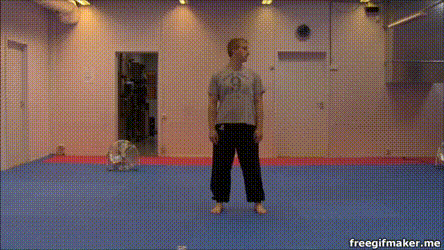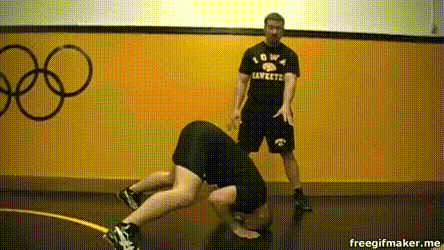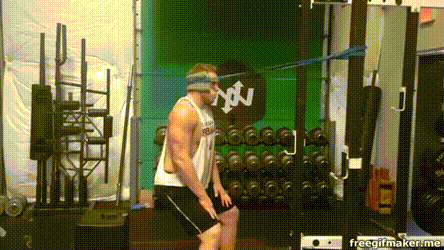
Getting your body in shape to perform flawlessly on the mat is no easy feat. You need to first and foremost have the necessary gas tank for Jiu-Jitsu. There’s no point in being strong as an ox if you gas out after two minutes. Conversely, you need strength, but not just your regular body-builder. you need to be strong in compromising positions which is a difficult puzzle to solve. At the same time, you need all those strong body parts to be flexible enough to endure the strain of grappling. In terms of exposure to stress, not all body parts get an equal amount in BJJ. In an intriguing turn of events, one of the most exposed body parts gets the least attention outside of the mats. Neck conditioning is something most grapplers take very lightly. Big mistake!
There’s no denying that the neck plays a major role in Brazilian Jiu-Jitsu. Most grapplers you see have Popeye-like forearms, a cauliflower ear or two, and a massive neck on them. Those that still have a tiny neck are either dealing with a neck injury or just about to get one. Neck conditioning can both prevent injuries and give you the necessary neck strength for rolling. And no, it doesn’t necessarily have to give you an oak-thick neck. If you know which neck conditioning exercises to do, you’ll get a strong, yet flexible neck, tailor-made for grappling.
If you still think neck conditioning is a luxury instead of a necessity, just think about injuries in BJJ. Hernia of the neck vertebrae is one of the most common ailments grapplers face. On top of that, BJJ has a tendency of making life hell through constant neck muscle pulls. Very often, those muscles you feel tight and crackling in your shoulder and back are actually a consequence of neck manipulation. NOt all neck muscles start and end where you can see them. so, take a few moments of your time and add in conditioning exercises for your most vulnerable body part.
When you’re already in the process of neck conditioning, throw in some other exercises as well. There’s hardly a better tool to get yourself in top grappling shape than kettlebells. All you need to know is in the “KB Essentials Instructional Guide” DVD by Mike Perry. Pick it up!
The Role Of The Neck In Grappling
The neck consists of seven vertebrae, which are packed tight with layers upon layers of muscles. It is anything but simple, both in anatomy and its purpose. The neck protects some of the most vital parts of our body while being able to execute complex movements in different directions. In BJJ, we use those abilities to the maximum, often putting the neck under a lot of strain.
Since the neck is so well surrounded by muscles, it can be trained to become stronger. However, neck conditioning exercises are something most people fail to understand. They’re not as easy as picking up a weight and curling it. Since the neck moves in plenty of directions, it involves different muscles. Different muscles mean different exercises. On top of everything, you need to find balance. Lucky for you, we take all the guesswork out of the equation.
The primary movement patterns of the neck are those of twisting, bending and a combination of both (AKA rolling. Each of these movement patterns can be executed in multiple directions, meaning some muscles have more than one job. As such, you need to make sure all your muscles are up for the task. Because in BJJ, you don’t just need to lift or turn your neck, you need to do it against another person, or simply use isometric force. very often we address the neck as the “fifth limb”. In order to post and hold with our necks, we need them to be strong and conditioned.
BJJ Neck Conditioning Exercises
Neck conditioning exercises for BJJ and grappling martial arts do not need to be complicated. All you need is versatility and smart programming. For that purpose, we’ve created three categories of neck conditioning exercises. First up are those that involve isolated neck movements. Next, its full-body moves strengthen the neck. And finally, we have the exercises that require additional equipment to help our necks become better suited for Jiu-Jitsu.
Isolated Exercises

These are probably the easiest of the bunch. Isolated neck exercises are those you usually do in the warm-up before every class. Or at least you should be doing it. They involve bending the neck in all directions, twisting the neck in all directions, and rolling the neck. Basically, they cover all the basic movement patterns of the neck.
At first, it is wise to start doing these movements standing or sitting. This way, you lessen the effect of gravity. When you are used to 20+rep sets, go supine. Now the same exercises are going to become much more difficult. You need to really master these before you even think about moving on to full-body exercises.
Full Body Exercises

Full body neck conditioning exercises should be approached with caution. yes, they’re safe and have been proven to work, but you need to build up to them. These exercises are basically stolen from wrestling. Those funky bridges you see wrestlers doing are all about neck strength. For BJJ, you need to skip past flips and the like and settle for good old bridge holds and neck rocks.
In order to make sure you hit all muscle groups associated with neck movement, you need variety in y our exercises. That means that when you do a neck bridge you should do it both front and back. When you do front bridges, you should also throw in neck rocks. These are basically all the exercises we talked about before. The only difference is that you have your head and feet on the mats and your butt up high, like an inverted V-shape.
Equipment based Neck Conditioning

Remember that if you jump straight into equipment training, and you have no prior experience, you’ll most likely end up with a very serious injury. So, go through all the above, master them, and if you still need/want a challenge, only then consider equipment.

In terms of equipment, you won’t need much. Either a rubber band or a stability ball is more than enough. Actually, you could use both if you want to. With a band it’s easy – do all the isolated exercises, only now adding resistance in each direction. With the stability ball, you can do exercises in two planes – standing and/or supine. For example, take a stability ball and place it on a wall at eye level while standing, Now use your forehead to keep it in place. Press downwards and stay there, or go up and down for reps. The ball provides more resistance as you push into it, working both sides of the muscles involved in a movement.
The Best Strength & Conditioning DVD and Digital Instructionals










































